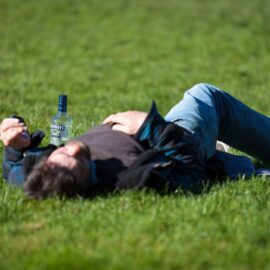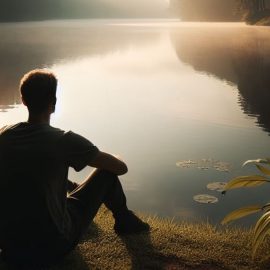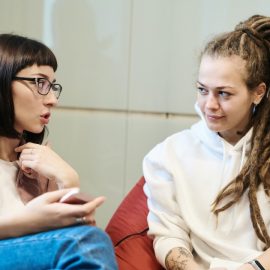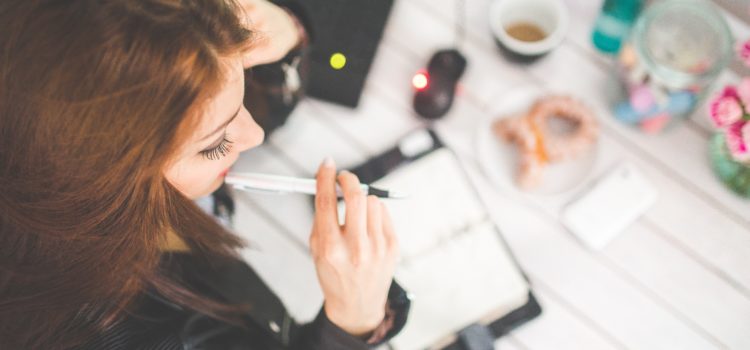
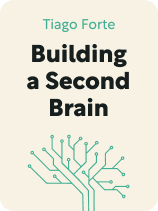
This article is an excerpt from the Shortform book guide to "Building a Second Brain" by Tiago Forte. Shortform has the world's best summaries and analyses of books you should be reading.
Like this article? Sign up for a free trial here.
Do you feel disorganized at work? Do you know how to organize information?
In Building a Second Brain, Tiago Forte explains that the organization of your external storage system is the most important component of increasing your creativity and productivity. He breaks down how to organize information into six main areas.
Read below to learn how to organize your external storage system.
How To Organize Your Storage System
Forte explains that the organization of your external storage system (ESS) is the most important component of increasing your creativity and productivity. Creating folders and sub-folders in your digital storage system will allow you to easily locate and utilize saved information. We can break Forte’s system into six main areas so you can learn how to organize information—four of these areas are part of the organization system he calls PARA.
(Shortform note: While Forte says that the highly organized digital working environment of an ESS will increase productivity and creativity, recent studies on physical working environments suggest that this may not be the case. Psychologists found no difference in productivity between people working in organized environments and those working in cluttered ones. However, the people in cluttered environments produced more unique and interesting ideas—they were more creative. If the observations from this study on physical work environments hold true for digital work environments, then your creativity might benefit more from a more integrated or “cluttered” ESS, rather than a highly siloed one like Forte recommends.)
The Six Main Areas of the ESS
The first section in your storage system will be an inbox. This is the first place your information and notes will go when you save them. Forte explains that you should sort information into a more specific folder later to save time and ensure it’s put in the best location. He elaborates that sorting information is time-consuming and if you feel you have to save and sort in one go, you might be discouraged from saving information altogether. Further, you’ll make the best decision for how the information can be used (and thus where to sort it) after you’ve had time to reflect on it. We’ll discuss how to sort information later in the guide.
The next section will be a management folder, where you’ll keep track of your progress toward active goals and projects. Forte also recommends including a to-do list in this folder that outlines the tasks you need to complete in the next week or so.
Your current goals folder is where you’ll store information and notes pertaining to the goals and projects you’re currently working on. (This corresponds to Forte’s “Projects” folder in the PARA system.) Within this folder will be subfolders for each goal and project. For example, you may have one sub-folder for a book you’re writing, another for a career goal you’re working toward, and a third for a computer desktop you’re building.
Your ongoing engagements folder will contain subfolders for information on commitments that require continuous maintenance. (This corresponds to Forte’s “Areas” folder in the PARA system.) For example, you may have a sub-folder for your home decor, romantic relationship, or pets.
Your topics-of-interest folder will contain subfolders for concepts or areas that you’re interested in learning more about but haven’t yet turned into a project or engagement. (This corresponds to Forte’s “Resources” folder in the PARA system.) For example, you might have a sub-folder where you store information that relates to the question: What is the meaning of life? When these sub-folders start accumulating lots of information, you might consider moving them into the current goals or ongoing engagements folder. For example, you might decide to write an essay on the meaning of life and move the sub-folder on this topic into current goals.
Finally, the hold folder is where you’ll store old or currently irrelevant material—things you want to place on hold for the time being. (This corresponds to Forte’s “Archives” folder in the PARA system.) This is where you’ll move sub-folders from current goals once they’re completed, work you did for projects that you decided not to use, or any information you’ve saved that doesn’t fit in any current goals, ongoing engagements, or topics-of-interest sub-folders.
GTD: An Alternative Method For Recording and Organizing Important Information
In Getting Things Done, David Allen presents an alternative method for recording and organizing important information that he calls the Getting Things Done (GTD) Method. Many of the “folders” Allen recommends creating to organize information correspond to those recommended by Forte. However, Allen suggests a further division of information, including nine main folders in his method.
Allen suggests that you immediately sort information into the appropriate folder rather than into an inbox folder, as Forte recommends. If the information you’re saving is relevant to something you’re currently working on, Allen recommends sorting it into a project support materials folder, which corresponds to the project subfolders of the current goals folder in Forte’s method.
If the information requires you to take action but you don’t already have a relevant project in the works, Allen recommends creating a new project in a project lists folder. Allen’s project lists folder corresponds to your current goals folder in Forte’s method.
If the information isn’t currently actionable (meaning it’s useful but not relevant to a current goal or project), Allen recommends placing it in a reference list folder. In Forte’s method, this information would be sorted into one of your topics of interest or ongoing engagement subfolders, depending on where it would be the most useful.
If the information isn’t currently relevant but you still find it interesting and might want to revisit it in the future, Allen recommends sorting it into a someday/maybe folder. While Forte’s method doesn’t have a folder that directly corresponds to this, the hold folder is fairly similar because it’s where Forte recommends storing information that’s not currently relevant.
If you’ve saved information somewhere but realize it’s useless, Allen recommends moving it to a trash folder to delete it. Forte doesn’t include this folder because his method is intended to help you only save information that’s important and relevant, as we’ll discuss in the next section.
Allen also recommends creating a number of folders to manage the progress and deadlines of your goals and projects: a waiting-for list folder to manage tasks you’re waiting on others to accomplish, a tickler list folder with date-specific reminders about when you need to get future tasks done, a calendar list folder to keep track of other important dates, and a next actions folder to contain your to-do list. In contrast, Forte recommends simply managing your progress and keeping a to-do list of your active goals in your management folder.

———End of Preview———
Like what you just read? Read the rest of the world's best book summary and analysis of Tiago Forte's "Building a Second Brain" at Shortform.
Here's what you'll find in our full Building a Second Brain summary:
- Why we get frustrated and overwhelmed in the age of information
- Why modern humans need an external storage system (ESS)
- How to make and organize an ESS to increase creativity and productivity


